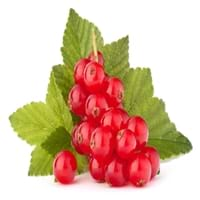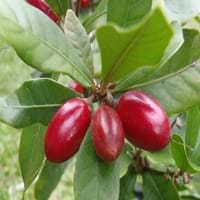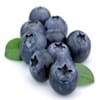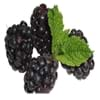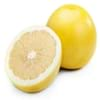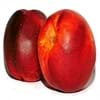Health Benefits
Cancer prevention, Gout treatment, Heart care, Regulation of heart rate, Treatment of rheumatism
Good for diabetics, Improves well-being, Miraculin/miracle fruit makes sour things taste sweet
General Benefits
Anti oxidant properties, Controls blood pressure, Cures fever, Digestive aid, Healing of wounds, Helps in weight loss, Strengthens bones
Has taste modifying effect
Skin Benefits
Brightens and lightens complexion, Reduces wrinkles, Treatment of acne
NA
Hair Benefits
Protects hair
NA
Allergy Symptoms
Abnormally rapid heart rate, Anaphylaxis, Breathing difficulty, Hives, Itching, Swallowing difficulties
Itching, Skin rash
Side Effects
Possibly unsafe during pregnancy
Changes taste of food eaten after this fruit, Coagulation
Best Time to Eat
Best if taken as a breakfast (or empty stomach), As a snack in the late afternoon, Don't eat after meal, Morning time (before lunch)
As a snack in the late afternoon, Eat the fresh ones, avoid mixing with any other foods, don't eat after meal., Morning time (before lunch)
Protein to Carb Ratio
Not Available
Vitamin A (Retinol)
Not Available
Vitamin B1 (Thiamin)
Not Available
Vitamin B2 (Riboflavin)
Not Available
Vitamin B3 (Niacin)
Not Available
Vitamin B5 (Pantothenic Acid)
Not Available
Vitamin B6 (Pyridoxin)
Not Available
Vitamin B9 (Folic acid)
Not Available
Vitamin C (Ascorbic Acid)
Vitamin K (Phyllochinone)
Not Available
Lutein+Zeaxanthin
Not Available
Water Content
Not Available
Calories in Fresh Fruit with Peel
Not Available
Calories in Fresh Fruit without Peel
Not Available
Not Available
Calories in Frozen Form
Not Available
Not Available
Calories in Dried Form
Not Available
Calories in Canned Form
Not Available
Not Available
Calories in Juice
Not Available
Calories in Jam
Not Available
Calories in Pie
Not Available
Varieties
Rovada, Stanza, Red Lake, Junifer and Jonkheer van Tets
Gymnema Sylvestre and Thaumatococcus Daniellii
Inside Color
Red
Greyish-white
Taste
Sour, Tart
NA, Sweet
Origin
Europe
West Africa
Soil Type
Moist, Well-drained
Well-drained
Climatic Conditions
Cold
Rainfall
Facts about
- The albino version of red currants known as white currants, are often sold as different fruit.
- Red currant tea is healthy substitute for coffee.
- There are more than 150 varieties of red currants.
- The name 'Miracle' because of the magical experience you get after eating it.
- When you have lemon after eating this fruit, it tastes sweet as if it is added with sugar.
- It is also used as natural sweetener.
Other Countries
Belgium, France, Germany, Ireland, Italy, Netherlands, Poland, Portugal, Scotland, Spain, Sweden, United Kingdom
NA
Top Importer
Germany
Not Available
Top Exporter
Russia
United States of America
Botanical Name
Ribes rubrum
Synsepalum Dulcificum
Synonym
Not Available
Miracle Berry, Miraculous Berry and Sweet Berry
Subkingdom
Tracheobionta
Tracheobionta
Division
Magnoliophyta
NA
Subclass
Rosidae
Asteridae
Order
Saxifragales
Ericales
Family
Grossulariaceae
Sapotaceae
Species
R. rubrum
S. dulcificum
Generic Group
Saxifrage
Not Available
Difference Between Red Currant and Miracle fruit
We might think that Red Currant and Miracle fruit are similar with respect to nutritional value and health benefits. But the nutrient content of both fruits is different. Red Currant and Miracle fruit Facts such as their taste, shape, color, and size are also distinct. The difference between Red Currant and Miracle fruit is explained here.
The amount of calories in 100 gm of fresh Red Currant and Miracle fruit with peel is 56.00 kcal and Not Available and the amount of calories without peel is Not Available and Not Available respectively. Thus, Red Currant and Miracle fruit belong to Low Calorie Fruits and Low Calorie Fruits category.These fruits might or might not differ with respect to their scientific classification. The order of Red Currant and Miracle fruit is Saxifragales and Ericales respectively. Red Currant belongs to Grossulariaceae family and Miracle fruit belongs to Sapotaceae family. Red Currant belongs to Ribes genus of R. rubrum species and Miracle fruit belongs to Synsepalum genus of S. dulcificum species. Beings plants, both fruits belong to Plantae Kingdom.
